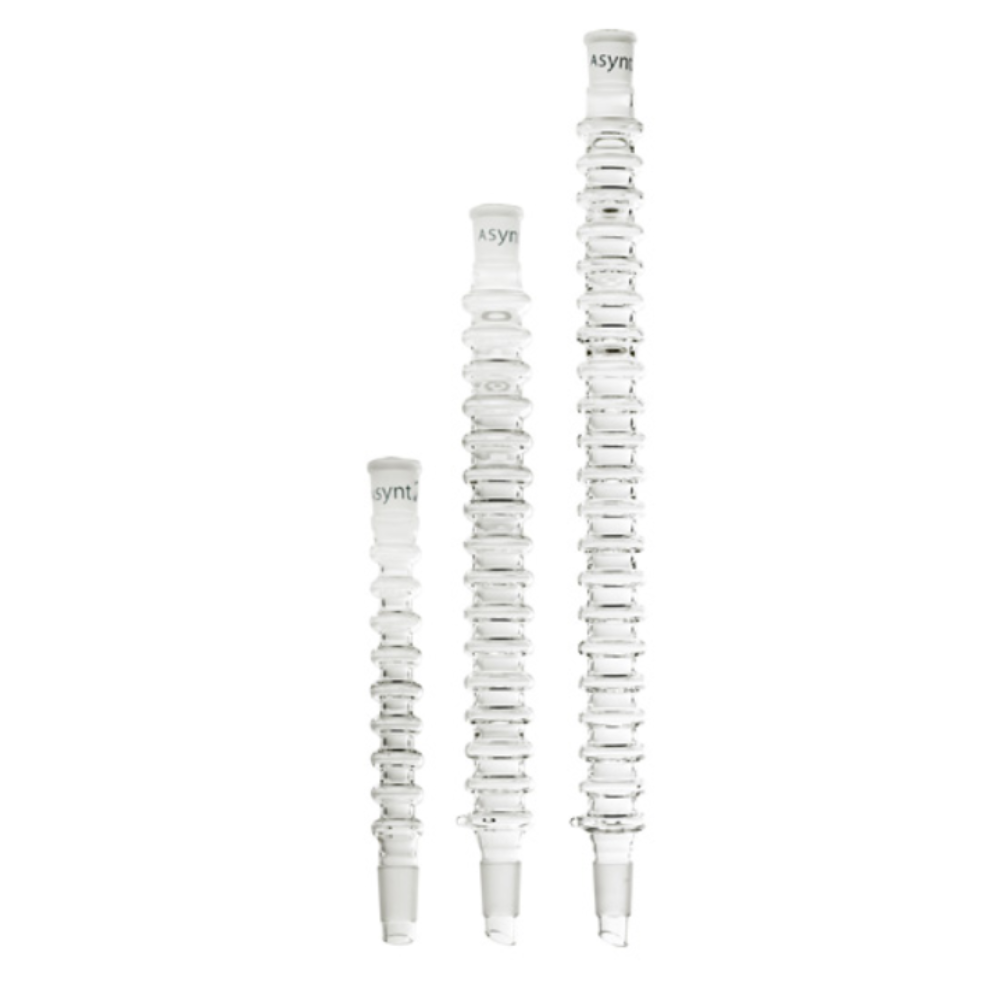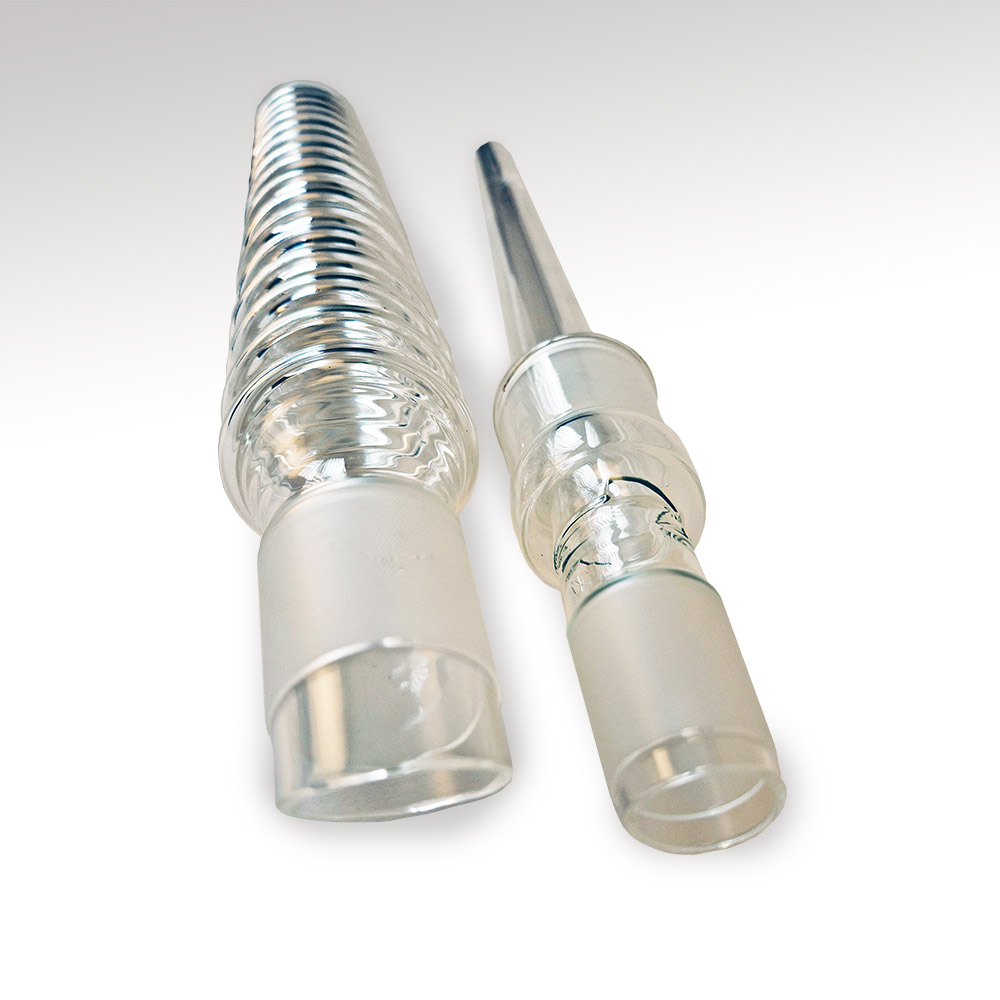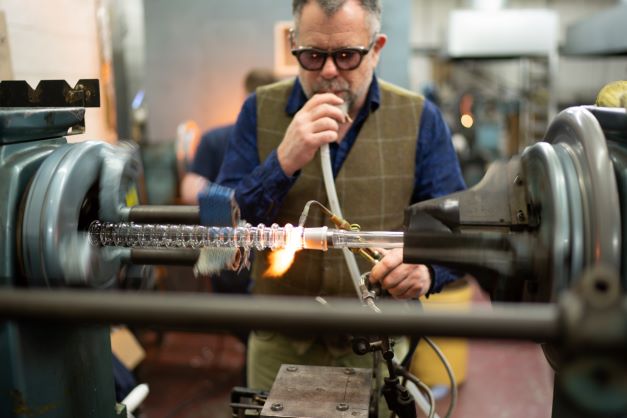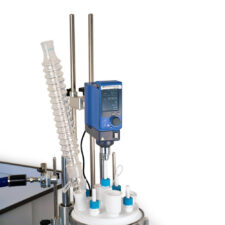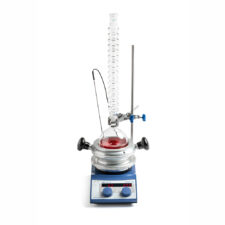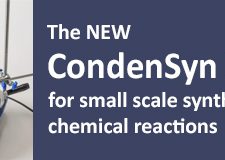Reflux condensers have been around for a long time, and there are a great many available, but what makes an effective and user friendly reflux condenser chemistry tool? There are a few ways to measure the efficiency of a reflux condenser. One is analysing the percentage of vapour condensed, another is to consider the amount of energy / water that the condenser uses to achieve this.
The best way to optimise this ratio is with a waterless, air condenser. These remove the need for any water or energy usage. This makes them the most sustainable and cost-efficient option, while also providing the same level of vapour condensation as water condensers.
Our reflux CondenSyn come in a range of sizes suited to different chemistry volumes
How does a reflux air condenser work?
Rather than heat being carried away by water (normally pumped through an internal coil), air condensers work using their shape to slow the rate of diffusion of a vapour and induce a turbulent flow. Turbulent flow significantly increased the number of molecules that come into contact with the glass surface of the condenser boosting the amount of heat conducted away. The condensers also have a large surface area which further improves the rate of conduction.
The reflux design allows the condensed product to trickle back into the reaction. This means that a reaction can be run at a high temperature, for an extended period, without all the reactants evaporating away. This makes this technique excellent for the below processes (as well as many more besides):
- Organic synthesis – reflux condensers allow for extended heating without loss of reactants / solvents
- Purification Process – a reflux condenser can help purify liquids by continuous vaporization and condensation
- Polymerisation – once again a reflux condenser allows for precise heating control for an extended period
- Drug Synthesis – many pharmaceutical compounds are synthesized through reactions that need prolonged heating under reflux to ensure complete reaction and high yields
- Solution Preparation – reflux can help in preparing saturated solutions of compounds that require high temperatures to dissolve completely
The CondenSyn Maxi has a reflux option for higher volume applications
What factors should be considered when choosing a reflux condenser?
Reflux condensers vary significantly in size, design and efficiency. As mentioned above air condensers provide the best water and energy savings but there are still other factors to consider.
One is the fitting required and the condenser will need to match up with your round bottom flask or reactor vessel it is being used in tandem with. Our range, as standard, covers B14, B19, B24, B9 and B34 with custom sizes available.
The other key consideration is the length/height of the condenser. With our CondenSyn range we recommend the following:
- 200 mm for use with flasks up to 100 mL in size
- 350 mm for use with flasks up to 500 mL in size
- 450 mm for use with flasks up to 1000 mL in size
All our CondenSyn are manufactured, by hand, in the UK
Conclusion:
Reflux condenser chemistry has a wide range of applications across different fields. Reflux air condensers provide an excellent way to maximise the efficiency of your reflux processes while also providing a sustainable alternative to water cooled condenser.
Whatever your required application and specification if you’d like to know more about our range of waterless reflux condensers feel free to contact with via our websites live chat, email us at [email protected] or call 01638 781709. We look forward to hearing your questions.
